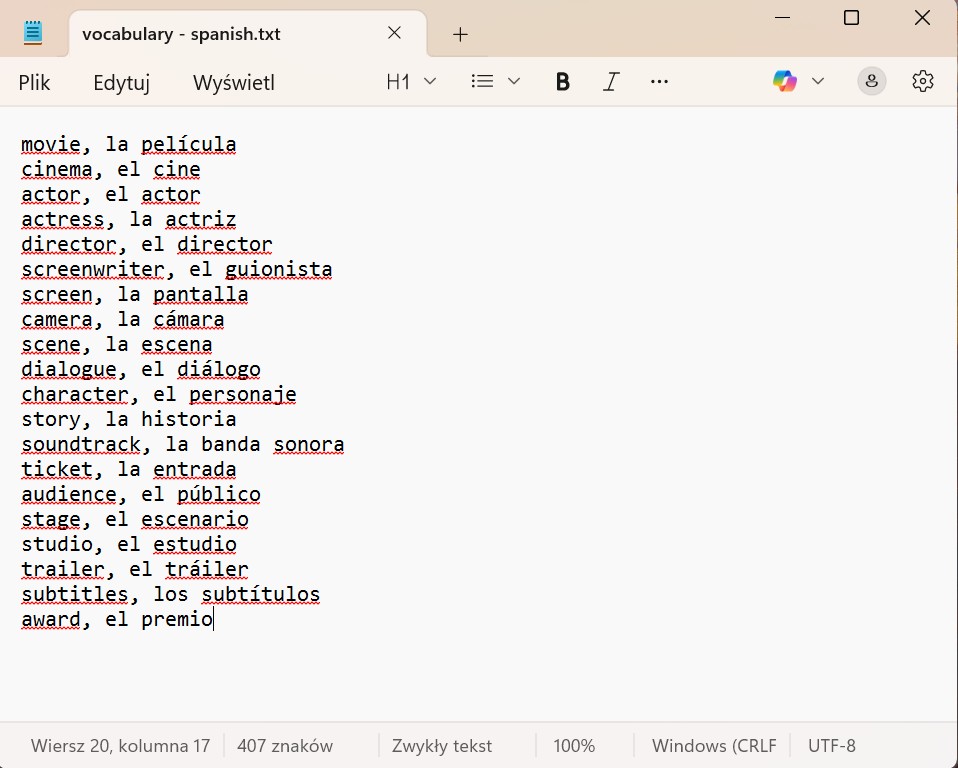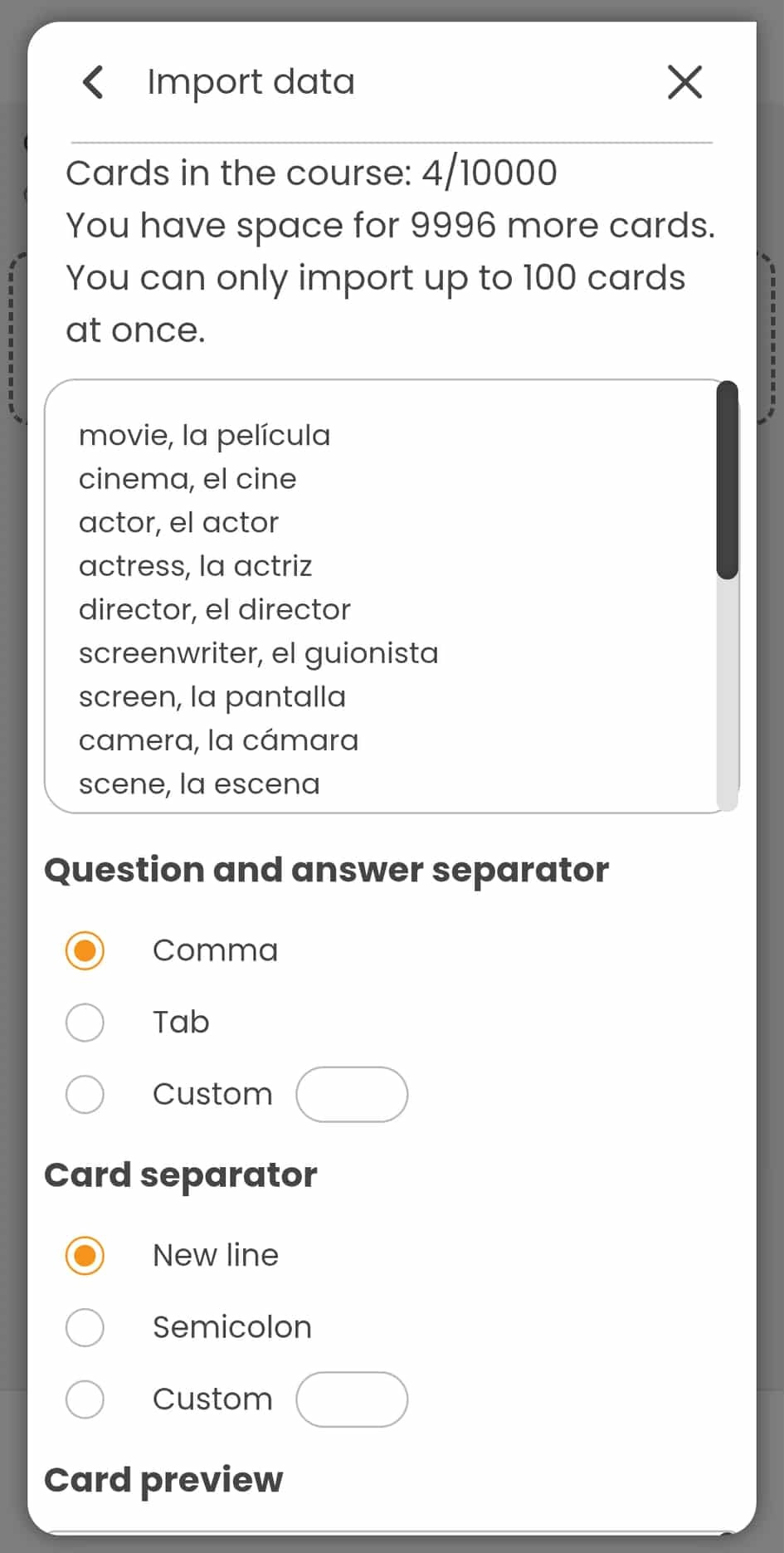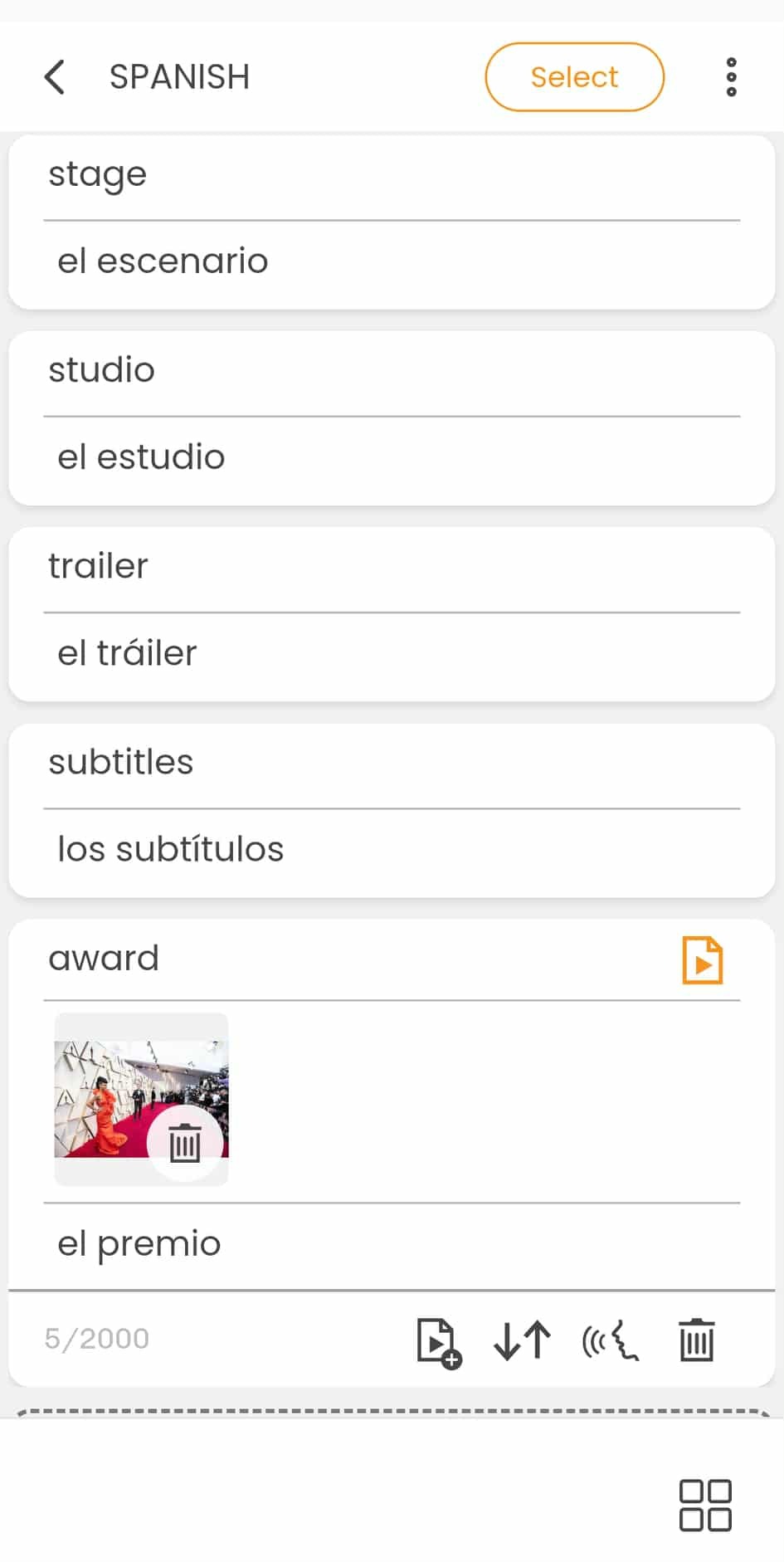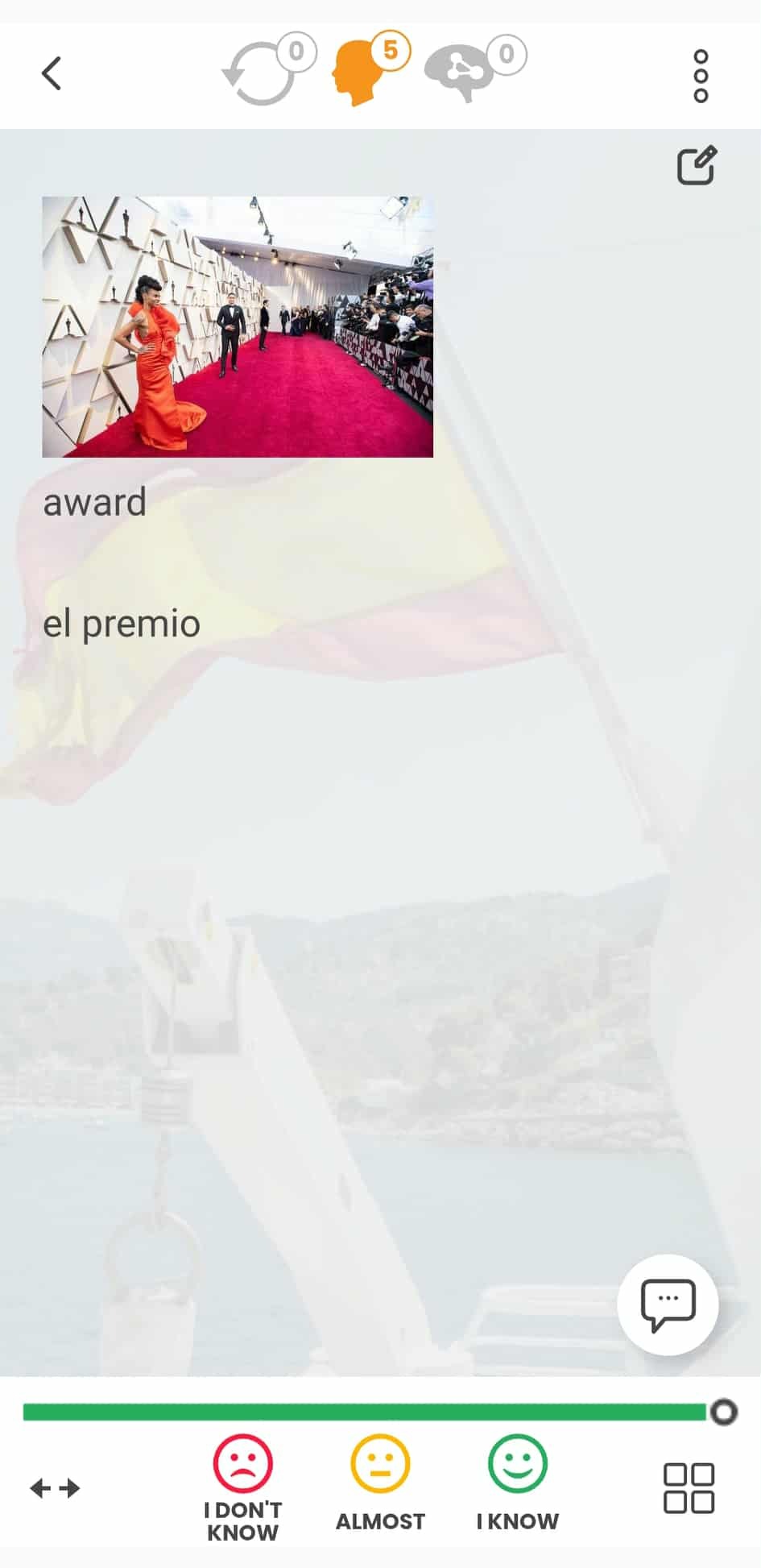Flashcards are one of the simplest yet most effective ways to learn languages—and not only languages. They are based on quick repetitions of questions and answers, which supports active recall and makes memorization easier. In the age of online apps, you no longer need paper cards—you can now easily create your own flashcards in the SuperMemo course editor and learn them in the most efficient way.
Why create your own flashcards?
Ready-made language courses are a great starting point, but sometimes you want to reinforce material that applies only to you—specialized vocabulary, industry-specific expressions, or a list of terms from your classes. Custom flashcards allow you to tailor learning to your individual needs. With them, you can create a personalized set of cards that focuses on exactly what you want to remember.
Although SuperMemo is primarily known for its language courses, the method behind the platform is perfect for learning any subject, topic, or school/academic material.
SuperMemo course editor – create flashcards step by step
In the SuperMemo app, you’ll find an intuitive course editor that allows you to easily create your own cards (flashcards). You can add questions and answers, insert images, audio recordings, or additional explanations. Everything is done in a clear interface that doesn’t require technical skills.
You also have full control over the content—from simple word pairs to detailed definitions or sample sentences. This way, your flashcards become not only a review tool but also a mini knowledge base.
Learn more about building courses from scratch in the article: Create your own courses in the SuperMemo app or in our FAQ section.
Import – quickly add many flashcards at once
Creating flashcards doesn’t have to be time-consuming or complicated. SuperMemo offers the Import feature, which allows you to upload cards in bulk, e.g., from a file prepared in Excel, Notepad, or Word. This saves a huge amount of time—rather than typing each card individually, you simply prepare a list of words/terms/dates and their translations/definitions/explanations, and the app will automatically generate ready-made flashcards.
This way, you can create a large course in just minutes, perfectly suited to your goals, and even share it with others. It’s especially useful for people studying in groups, preparing for exams, or working with large vocabulary sets.
How to import your list?
- Create a list of words/terms/dates with their translations/definitions/explanations in a txt or Word file. Use a consistent format across the list—for example, separate a word and its translation with a comma or tab. Separate individual cards with a line break, semicolon, or another chosen separator. You can import up to 100 cards at once.
- In the course editor (click More in the app, then Course editor), create a new course or open one where you want to add flashcards. Open the three-dot menu and select Import.
- Copy your list (not the file) and paste it into the “Paste your data here” field. Mark the right options in Question and Answer Separator and Card Separator.
- Confirm by clicking Import.
- You can now start learning with your flashcards (MemoCards)!


Limits: Regular users can create up to 10 private courses with 1,000 flashcards each. Premium users can create up to 100 courses with 10,000 flashcards each.


SuperMemo learning method – an advantage over other solutions
The biggest benefit of creating flashcards in SuperMemo is that you learn them with the original spaced repetition method. The SuperMemo method was developed in the 1980s and has been perfected over decades of scientific research and user experience.
In practice, the app tells you exactly when to review each item to ensure long-term retention, while avoiding unnecessary repetitions. This is something other apps can’t match—they often rely on simplified algorithms that are less effective and may lead to frustration.
We’re also constantly developing the app and its features, including the course editor. Soon, we plan to introduce flashcard import directly from files (e.g., CSV) to make the process even easier.
How to create effective flashcards?
The tool itself is one thing, but the way you design your flashcards is equally important. Here are some practical tips:
- Write short, clear answers—you’ll remember a simple definition better than a long explanation.
- Add examples—one context sentence makes recalling the meaning much easier.
- Use images—visuals boost memory and speed up learning.
- Avoid ambiguity—each card should focus on one concept.
- Use mnemonics—rhymes, acronyms, or associations help you recall faster.
Want to learn detailed, scientifically proven rules for creating flashcards? Read this article: Effective learning: Twenty rules of formulating knowledge.
Flashcards on the go and every day
A major advantage of SuperMemo is the ability to learn both online and offline (in the Android and iOS apps) after downloading a course to your device. Your flashcards are always at hand—you can review them on your commute, during breaks, or while traveling. Thanks to online synchronization, your progress is saved across all devices, e.g., between your smartphone and laptop.
Summary
Creating flashcards is a simple way to master new material, but when combined with the SuperMemo spaced repetition algorithm, it delivers truly impressive results. With the course editor, you can build your own sets from scratch, and the Import feature lets you add multiple cards at once.
If you want your flashcards to really work—create them in SuperMemo and learn the way the best learners do.



